#Tadd Dameron
Explore tagged Tumblr posts
Text
youtube
Tadd Dameron with John Coltrane, On A Misty Night (Remastered 2018) I Mating Call, 1962
6 notes
·
View notes
Text
The Slide Hampton Story: A Trombonist Extraordinaire
Introduction: Slide Hampton, born Locksley Wellington Hampton ninety-two years ago today on April 21, 1932, in Jeannette, Pennsylvania, is a name synonymous with excellence in jazz. His remarkable career as a trombonist, composer, and arranger has left an indelible mark on the world of music. Often heralded as one of the greatest jazz trombonists of all time, Hampton’s contributions to the genre…
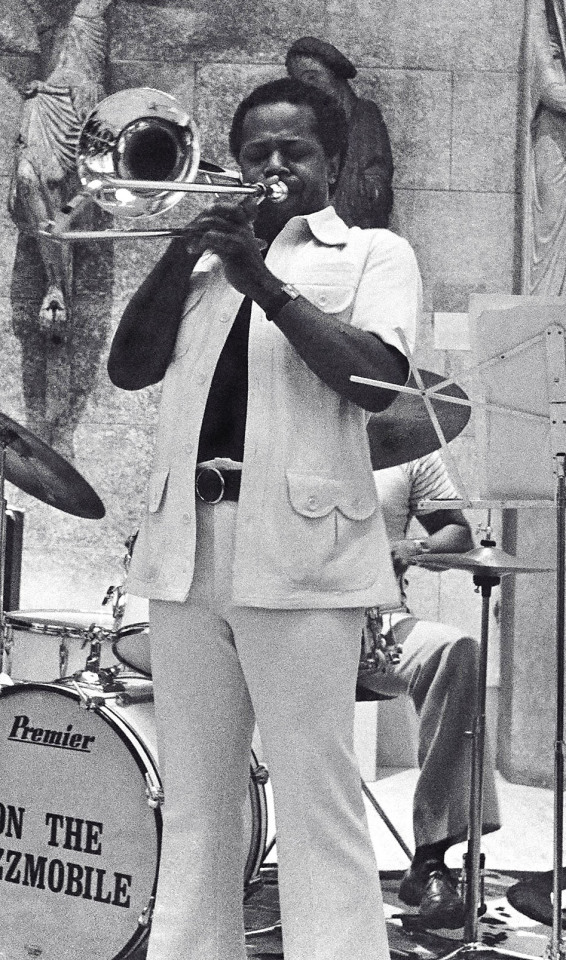
View On WordPress
#Art Blakey#Barry Harris#Buddy Johnson#Dawn Hampton#Freddie Hubbard#George Coleman#Jazz History#Jazz Trombonists#Lionel Hampton Band#Max Roach#Maynard Ferguson#McCoy Tyner#Mel Lewis#Melba Liston#Melba Liston and Her &039;Bones#Slide Hampton#Slide Hampton Octet#Tadd Dameron#Thad Jones#The Duke Hampton Band#Virtue Hampton Whitted
8 notes
·
View notes
Text
JOHN COLTRANE / PLAYS FOR LOVERS
#music#vinyl#records#jazz#レコード#newjazzthings#ジャズ#new jazz things#アナログレコード#ジャズレコード#アナログ#音楽#ニュージャズシングス#prestige#red garland#tadd dameron#john coltrane
4 notes
·
View notes
Video
youtube
Good Bait (2013 - Remaster)
15 notes
·
View notes
Text
youtube
Jorge Cabadas, impecable e implacable guitarrista, arriesgado y sentido que ya hemos subido en otras ocasiones. Me resulta muy complicado definir lo que hace, seguramente "libre" sea el mejor adjetivo (y ya van cinco), pero voy a remitirme a la descripción del vídeo: "Atrevido experimento a partir de un tema del gran Thelonius Monk y el excelente Cole Porter. Sesión Raras Músicas 133 en CCIC La Tortuga". Para que se hagan una idea, este es el "Let´s Cool One- All Of You" de Monk. De la misma sesión en directo, "A Child Is Born" de Thad Jones y la más esdrújula y difícil del lote, "Soultrane" de Tadd Dameron.
2 notes
·
View notes
Photo
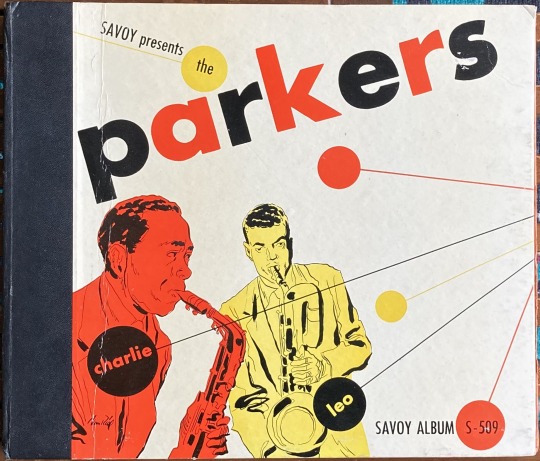

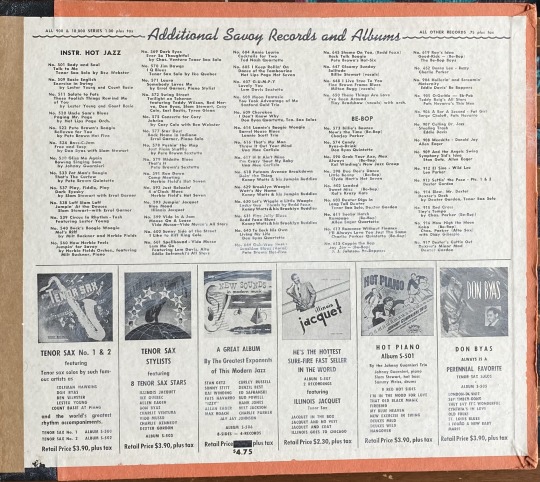
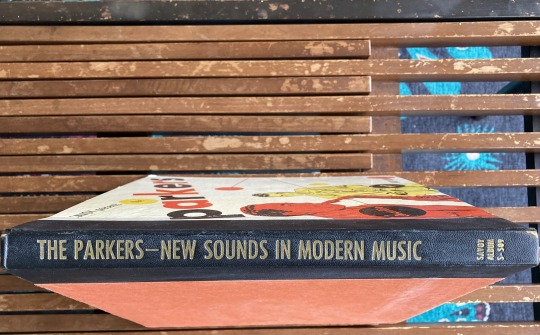




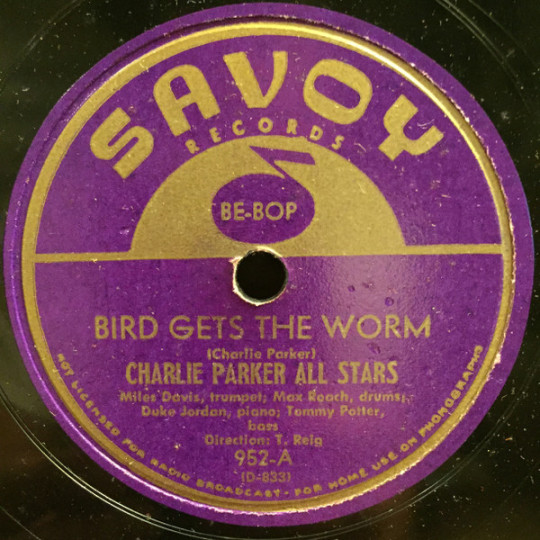
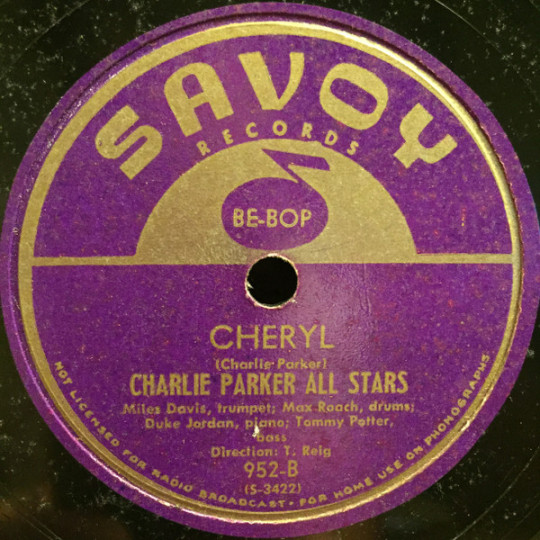
The Parkers - New Sounds in Modern Music, 1948 Savoy Records Album S-509
3 x shellac 10″ 78rpm records
youtube
#78rpm#be-bop#charlie parker#leo parker#miles davis#tadd dameron#max roach#howard mcgee#dexter gordon#j.j. johnson#duke jordan#savoy records#shellac
1 note
·
View note
Text

Today In History
Mary Lou Williams was born Mary Elfrieda Scruggs on May 8, 1910. In a remarkably productive career that spanned a half century, Mary Lou Williams established herself as a pianist, composer and arranger, an unprecedented feat that has remained an inspiration to women in jazz.
While Williams’s is widely regarded as one of the greatest female jazz musicians ever, her long list of accomplishments is impressive by any measure.
She wrote hundreds of compositions and arrangements and recorded more than one hundred records in 78, 45, and LP versions.
Williams wrote and arranged for Duke Ellington and Benny Goodman, and she was friend, mentor, and teacher to Thelonious Monk, Charlie Parker, Miles Davis, Tadd Dameron, Bud Powell, and Dizzy Gillespie.
CARTER™️ Magazine
#marry lou Williams#carter magazine#historyandhiphop365#wherehistoryandhiphopmeet#carter#history#cartermagazine#today in history#staywoke#blackhistory#blackhistorymonth
59 notes
·
View notes
Text

Remembering Mary Lou Williams - Jazz Pianist, Arranger, and Composer. She wrote hundreds of compositions and arrangements and recorded more than one hundred records. Williams wrote and arranged for Duke Ellington and Benny Goodman, and she was friend, mentor, and teacher to Thelonious Monk, Charlie Parker, Miles Davis, Tadd Dameron, Bud Powell, and Dizzy Gillespie
12 notes
·
View notes
Text

Fats Navarro & Tadd Dameron – The Complete Blue Note & Capitol Recordings(recorded 1947-1949)
Many valuable performances from the height of the bop era are included on this double CD. Subtitled “The Complete Blue Note and Capitol Recordings” and comprised of 23 songs and 13 alternate takes, the reissue features the great trumpeter Fats Navarro in peak form with three groups headed by pianist/arranger Tadd Dameron, in trumpet battles with one of his major influences, Howard McGhee, and on a remarkable all-star quintet with pianist Bud Powell and the young tenor Sonny Rollins; among the other sidemen are altoist Ernie Henry; tenors Charlie Rouse, Allen Eager, Wardell Gray, and Dexter Gordon; and vibraphonist Milt Jackson. In addition to such gems as “Our Delight,” “Lady Bird,” “Double Talk,” “Bouncing With Bud,” “Dance of the Infidels,” and “52nd Street Theme,” Fats is heard with the 1948 Benny Goodman septet (“Stealin’ Apples”) and Dameron leads a group with the 22-year-old Miles Davis. On a whole, this double CD has more than its share of essential music that belongs in all historical jazz collections (Scott Yanow/AllMusic).
3 notes
·
View notes
Text
LÉGENDES DU JAZZ
BENNY GOLSON, SAXOPHONISTE ET COMPOSITEUR "Basically, I'd like to stay simple. I'd like to write melodically, and pretty harmonically... Although I'm not consciously looking for it, maybe I want something that's easy to remember.... Beauty can be simple, beauty can be simplicity."
- Benny Golson
Né le 25 janvier 1929 à Philadelphie, Benjamin ‘’Benny’’ Golson a fait ses études secondaires à Philadelphie. À l’âge de neuf ans, Golson avait commencé à apprendre le piano sous les pressions de sa m��re qui voulait faire de lui un pianiste classique. Mais Golson ne l’entendait pas de cette oreille. Il expliquait: “That was aberrational in my neighborhood. All you heard there was the blues.”
Golson était âgé de quatorze ans lorsqu’il avait assisté à un concert de Lionel Hampton au Philadelphia’s Earl Theater. C’était après avoir entendu jouer Arnett Cobb qui faisait partie du groupe que Golson avait décidé de troquer le piano pour le saxophone ténor. Il avait commencé à composer à l’âge de dix-sept ans.
Pendant qu’il fréquentait le High School, Golson avait joué avec plusieurs musiciens prometteurs, dont John Coltrane, Red Garland, les frères Jimmy et Percy Heath, Philly Joe Jones et Red Rodney. LE MUSICIEN Après avoir obtenu son diplôme de l’Université Howard (où il avait écrit ses premiers arrangements), Golson avait brièvement conduit un camion de livraison avant de se joindre au groupe de rhythm n’ blues de Bull Moose Jackson en 1951. Tadd Dameron, que Golson considérerait plus tard comme sa plus importante influence comme compositeur, était le pianiste de Jackson à l’époque. Golson expliquait ainsi l’influence que Dameron avait eu sur lui: "Tadd's music really ignited the spark for me. After hearing things like 'Our Delight' and 'Lady Bird'... I wanted to do more than play tenor sax. I wanted to write."
Une autre influence majeure de Golson était le saxophoniste de swing Don Byas. Golson avait également été très influencé par Charlie Parker, qu’il avait entendu jouer pour la première fois lors d’un concert de l’Académie de Musique de Philadelphie en 1945. Golson précisait: “After we heard that concert that night, our lives changed. It was epochal, what was happening then.”
C’est après avoir entendu Parker que Golson avait commencé à développer son jeu très personnel combinant la chaleur et la fluidité des autres saxophonistes aux innovations harmonieuses de Bird.
Golson travaillait avec l’orchestre de Lionel Hampton à l’Apollo Theater de Harlem en 1956 lorsqu’il avait appris que le trompettiste Clifford Brown, avec qui il avait joué dans le groupe de Dameron de 1953 à 1958, était mort dans un accident d’automobile. Dans une entrevue accordée au magazine Downbeat en 1961, Golson avait décrit ainsi sa complicité avec Brown: "At the time of his death, Brownie was going in his direction more determinedly than anyone I've ever seen. Really, the last two years of his life, he got a hold of what he wanted to do. His imagination was infinite. He always had a bag of surprises."
Golson avait été tellement bouleversé par la mort de Brown qu’il avait composé une pièce en son honneur intitulée ‘’I Remember Clifford.’’ La pièce est devenue depuis un classique du jazz.
Après avoir quitté le groupe de Dameron, Golson s’était joint aux formations de Lionel Hampton, Johnny Hodges (avec qui il avait fait une tournée avec John Coltrane en 1954), Earl Bostic et Dizzy Gillespie, avec qui il avait participé à une tournée financée par le Département d’État.
Golson s’était ensuite joint aux Jazz Messengers d’Art Blakey avec qui il avait enregistré l’album ‘’Moanin’’’.
De 1959 à 1962, Golson avait co-dirigeé le groupe Jazztet avec le trompettiste Art Farmer. Le pianiste McCoy Tyner et le joueur de trombone Curtis Fuller faisaient aussi partie de la formation. En 1960, dans le cadre de sa participation au Jazztet, Golson avait remporté le New Star Award décerné par le magazine DownBeat. Le groupe a enregistré six albums avant de cesser ses activités en 1962. LE COMPOSITEUR
En 1963, à la demande de Quincy Jones et peut-être aussi pour mieux gagner sa vie, Golson s’était installé en Californie pour se concentrer sur la composition et le travail de studio. À cette époque, Golson avait composé de la musique pour des séries télé comme ‘’Mannix’’, ‘’Ironside’’, ‘’Room 222’’, ‘’M*A*S*H**’’, ‘’The Patridge Family’’ et ‘’Mission Impossible.’’ Il avait également écrit des thèmes publicitaires pour des compagnies comme Canada Dry, Carnation, Chevrolet, Chrysler, Clorox, Dodge, General Telephone, Gillette, MacDonald’s, Mattel, Nissan, Pepsi Cola, Texaco et Heinz.
Au milieu des années 1970, Golson avait effectué un retour sur scène. Golson, qui n’avait pas touché à son saxophone depuis dix ans, avait décrit ainsi la sensation qu’il avait ressenti lorsqu’il avait recommencé à jouer de son instrument: "It was like I'd never played the instrument; it felt like a piece of plumbing from the kitchen in my hand. My mind seemed like it wanted to go ahead--my fingers were those of a dead man; my lips were like ripe tomatoes. It was quite a physical struggle. I had no muscles in my lips or jaws... I sounded so bad, I was even embarrassed for my wife to hear me!" Golson avait aussi recommencé à enregistrer, collaborant notamment avec Freddie Hubbard, Woody Shaw et Pharoah Sanders.
Selon le critique Scott Yanow, à l’époque, le style de Golson au saxophone avait énormément évolué et s’apparentait davantage au style d’Archie Shepp et aux autres musiciens du free jazz qu’à son style original influencé par le swing de Don Byas. En 1982, après une tournée au Japon avec Art Farmer, Golson avait complètement réorganisé son Jazztet pour l’adapter aux nouvelles réalités du jazz.
La nouvelle édition du groupe avait été accueillie avec enthousiasme, tant par les amateurs que par la critique. Golson expliquait: "The reception for the revived Jazztet was so warm last year that it was almost like coming back home this second time. The enthusiasm of the audiences has been very encouraging for us--it gives us some incentive to go on in that same direction."
La reprise des activités du Jazztet n’avait cependant rien à voir avec la nostalgie. Golson poursuivait: "In twenty years, as you might expect... our musical approach is just a little different from the way it was then. Although there's some nostalgic things, like 'Whisper Not' ... I've written a lot of new tunes, and we've moved away somewhat from the hard, straight-up-and-down, strict harmonic kind of approach."
Véritable ambassadeur du jazz, Golson avait participé en 1987 à une tournée organisée par le Département d’État qui l’avait conduit du sud-est asiatique à la Nouvelle-Zélande, en passant par l’Indonésie, la Malaisie, la Birmanie et Singapour. Plus tard, l’agence Philip Morris l’avait envoyé à Bangkok, en Thailande, composer de la musique pour le Bangkok Symphony Orchestra.
À la fin des années 1990 et au début des années 2000, Golson avait fait une tournée avec le groupe toute étoile Roots (dont il était le directeur musical depuis 1995) ainsi qu’avec le trio de Keith Copeland. Il continuait aussi à composer parallèlement.
De 1998 à 2000, Golson avait participé à une tournée intitulée ‘’Jazz Messengers - A Legacy to Art Blakey’’, qui lui avait fait traverser tous les États-Unis, en plus de le conduire en Europe et au Japon. Comme son nom l’indique, la tournée avait pour but de rendre hommage à son ancien mentor Art Blakey, qui était décédé en octobre 1990. Lors des funérailles de Blakey, la pièce ‘’Blues March’’ de Golson avait d’ailleurs été interprétée pour lui rendre hommage.
En 2004, Golson avait fit une brève apparition dans le film ‘’The Terminal’’ avec Tom Hanks. Dans le film, on faisait allusion à la photo ‘’A Great Day in Harlem’’ sur laquelle Golson apparaissait aux côtés de plusieurs autres musiciens de jazz. Dans le film, le personnage principal, Viktor Navorski, interprété par Hanks, avait voyagé depuis l’Europe pour obtenir l’autographe de Golson. La composition de Golson, ‘’Something in B Flat’’, peut aussi être entendue sur une scène où Viktor est en train de peindre et de redécorer une partie le terminus de l’aéroport. Dans une autre scène, on voit Golson interpréter la pièce ‘’Killer Joe.’’
Benny Golson est mort à sa résidence de Manhattan le 21 septembre 2024. Il était âgé de 95 ans. La mort de Golson a été annoncée par son agent Jason Franklin. HONNEURS ET RÉCOMPENSES Benny Golson a reçu plusieurs prix et récompenses au cours de sa carrière.
Golson, qui a remporté un prix de la Fondation Guggenheim en 1994, a vu sa carrière être couronnée deux ans plus tard par la remise d’un NEA Jazz Masters Award de la National Endowment for the Arts. La même année, le programme de Jazz de l’Université Howard avait créé un prix en son honneur nommé le ‘’Benny Golson Jazz Master Award.’’
En octobre 2007, la Mid Atlantic Arts Foundation avait décerné à Golson le Mellon Living Legend Legacy Award, lors d’une cérémonie tenue au Lincoln Center. Le même mois, l’Université de Pittsburgh lui avait accordé l’International Academy of Jazz Outstanding Lifetime Achievement Award. Le prix lui avait été remis dans le cadre du 37e concert annuel de Jazz au Carnegie Music Hall. En novembre 2009, Goldson a été intronisé au sein de l’Academy of Jazz Hall of Fame.
Benny Golson est le seul artiste de jazz toujours vivant à avoir composé au moins huit standards de jazz. Véritable institution, Golson a enregistré plus de trente albums sous son nom en plus d’avoir participé à des centaines d’enregistrements d’autres artistes. Golson a aussi plus de 300 compositions à son crédit. Au cours de sa carrière de plus de soixante ans, Golson a également écrit un nombre incalculable d’arrangements pour des artistes comme Count Basie, John Coltrane, Miles Davis, Sammy Davis Jr., Ella Fitzgerald, Dizzy Gillespie, Benny Goodman, Lionel Hampton, Quincy Jones, Peggy Lee, Carmen McRae, Anita O’Day, Oscar Peterson, Diana Ross, Mek Torme, George Shearing, Dusty Springfield et plusieurs autres.
Passionné d’éducation, Golson a aussi fait des lectures au Lincoln Center et aux universités de New York et de Chicago. Loin de se limiter à la musique, les conférences de Golson abordaient aussi des questions comme le racisme et les relations raciales. Dans une entrevue accordée au Irish Times, Golson avait tenu à préciser que ses préoccupations n’étaient pas tant personnelles qu’historiques. Il avait déclaré: “[Racism] doesn’t disturb me and it didn’t disturb me when I was coming up as a kid. Racism? I wanted to play the music. I turned a deaf ear to all that stuff.”
Golson est également lauréat de doctorats honorifiques de la Berklee School of Music et du William Paterson College de Wayne, au New Jersey. Grand pédagogue, il a aussi dirigé des ateliers dans plusieurs universités à travers le monde.
Outre ‘’I Remember Clifford’’, plusieurs des compositions de Golson sont devenues des standards du jazz: ‘’Stablemates’’, ‘’Killer Joe’’, ‘‘Whisper Not’’, ‘’Along Came Betty’’, ‘’Are You Real ?’’, ‘’Blues March’’, etc.
En 1958, au cours d’une entrevue accordée au magazine DownBeat, Golson avait ainsi décrit sa philosophie de compositeur: "I feel that the best contribution any writer can make is to create compositions that are impressive, meaningful, and lasting. I think all serious writers consciously or unconsciously strive for this." Dans une autre entevue accordée deux ans plus tard, Golson avait précisé: "Basically, I'd like to stay simple. I'd like to write melodically, and pretty harmonically... Although I'm not consciously looking for it, maybe I want something that's easy to remember.... Beauty can be simple, beauty can be simplicity."
Lorsqu’on demandait à Golson laquelle de ses activités il trouvait la plus satisfaisante entre la composition et sa carrière de musicien, il répondait simplement: “It’s like having two wives. I’m a musical bigamist. I can’t decide, so I just go on with both of them.” ©-2023-2024, tous droits réservés, Les Productions de l’Imaginaire historique SOURCES:
‘’Benny Golson.’’ Wikipedia, 2022. ‘’Benny Golson.’’ National Endowment of the Arts, 2023. ‘’Benny Golson.’’ Jazzstandards.com, 2023. ‘’Benny Golson.’’ Encyclopedia.com, 13 août 2018.
2 notes
·
View notes
Text
¿Existe la originalidad?

"Los buenos artistas copian, los genios roban".
Una frase que alguna vez Steve Jobs pronunció la cual atribuyó a Pablo Picasso. Hace referencia a que la genialidad muchas veces solo es la capacidad de ver lo que ya existe a través de una nueva luz.
Esta es una verdad que los jazzistas conocen bien, básicamente la evolución del jazz se dio a través de un montón de músicos copiándose unos a otros, irónicamente el jazz es sinónimo de creatividad, originalidad e innovación.
De hecho existe una práctica muy común dentro del jazz llamada contrafact que consiste en tomar la armonía de una canción existente para crear una nueva. Algunos contrafact famosos son Donna Lee atribuida a Charlie Parker (aunque en alguna ocasión Davis reclamó su autoría) la cual toma su armonía del standard Back Home Again In Indiana, otro muy famoso es Oleo de Sonny Rollins que toma su armonía de I Got Rhythm.
Un músico que llevó está práctica un paso más allá fue John Coltrane, etiquetado como genio en más de una ocasión. En 1957 publicó el álbum Blue Train donde se encuentra uno de sus temas más famosos: Lazy Bird el cuál es básicamente un contrafact del tema Lady Bird de Tadd Dameron, sin embargo a la progresión original coltrane sustituye los movimientos de ll-V por una back door cadence para luego resolver en una sorpresiva modulación de tercera mayor descendente.
Utilizando esta técnica Coltrane crearía varias canciones a las que se les conoce como temas de sustitución de Coltrane.
3 notes
·
View notes
Text
youtube
Tadd Dameron · John Coltrane, Soultrane (Rudy Van Gelder Remaster) I Mating Call (RVG Remaster), 1956
1 note
·
View note
Text
'Round About Midnight: Miles Davis' Timeless Journey into Jazz Excellence
Introduction: Few recordings in jazz history have created as lasting an impression as Miles Davis’ “‘Round About Midnight.” This legendary album, released in 1957, is a monument to Miles Davis’ creativity and the transformational power of jazz. “‘Round About Midnight” not only cemented Davis’ image as a jazz titan but also transformed the trajectory of the entire genre, thanks to its fascinating…

View On WordPress
#&039;Round About Midnight#Birth of the Cool#Charlie Parker#Classic Albums#Cole Porter#Cool Jazz#Jazz History#John Coltrane#Miles Davis#Paul Chambers#Philly Joe Jones#Red Garland#Tadd Dameron#Thelonious Monk
3 notes
·
View notes
Video
youtube
🎶✨Acoustic Nylon Guitar Jazz Medieval: A Timeless Journey Through Sound! ✨🎶
Get ready to embark on a unique sonic adventure where past and present fuse together in breathtaking medieval jazz arrangements! I, Ricardo Farão, have crafted these exclusive arrangements for acoustic guitar, acoustic bass, drums, and Nord synthesizer, while blending in an enchanting array of Renaissance and medieval instruments—including the virginal, hurdy gurdy, chitarrino, crumhorn, cornett, dulciana and zampogna. Imagine a mystical setting that transports you to distant eras, where music was the thread that wove together cultures and histories. Every note has been meticulously arranged to deliver an immersive experience that marries the elegance of jazz with the captivating charm of ancient instruments, creating a symphony that defies time and awakens the senses.
🎵 00:00 Veni Creator Spiritus - Anonymous (9th Century) 03:45 The Rose Of Allendale - Sidney Nelson 06:40 Greensleaves - Anonymous (16th Century) 12:02 Lady Bird - Tadd Dameron 14:22 La Fiesta - Chick Corea 18:44 Avalon - Vincent Rose 20:58 Crystal Silence - Chick Corea 27:23 Scarborough Fair - Anonymous (13th Century) 29:20 Epistrophy - Thelonious Monk
Immerse yourself in this extraordinary blend of sounds and rhythms that celebrate both tradition and innovation. Each arrangement reflects my passion for uniting eras and cultures, creating a musical atmosphere that is at once historical and contemporary.
🌐 Discover more about my work: Official Website https://www.ricardofarao.com/ Subscribe to the channel! Like, share, and comment below—join me on this unforgettable musical journey!
0 notes
Text
12/6 おはようございます。Anita O'day / Pick Yourself Up Mgv2043 等更新しました。
Anita O’day / Pick Yourself Up Mgv2043Art Tatum / Buddy De Franco Quartet MGV8229Barry Harris / plays Tadd Dameron 113Charlie Parker / Swedish Schnapps mgv8010Charles Mingus / Mingus at Monterey jws001/002Robin Kenyatta / Until 2005Slide Hampton / Explosion 1396Modern Jazz Quartet Jimmy Giuffre / At Music Inn 1247High Inergy / Steppin’ Out G7-982R1Duane Eddy / Girls Girls Girls JLP-70-3019Curtis…

View On WordPress
0 notes
Text
youtube
Karin Krog, Georgie Fame & Tadd Dameron - On a Misty Night
0 notes